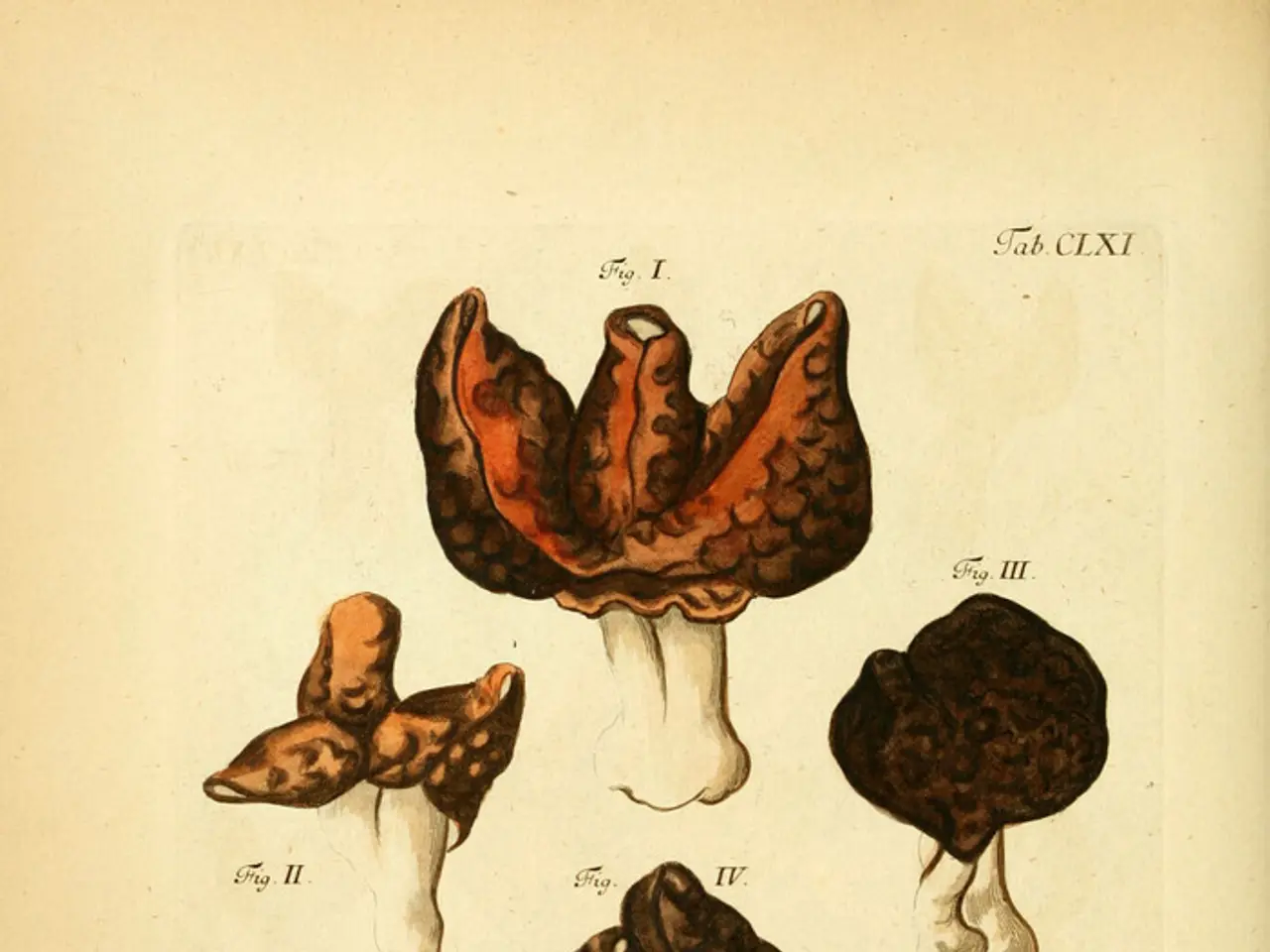Radiation-emitting mushrooms discovered in Belarus - learn about the affected region
In Belarus, there remains a radiation safety concern for mushrooms, especially those collected in certain areas, such as the Mozyrsky District. This is due to residual radioactive contamination from the 1986 Chernobyl nuclear disaster.
Mushrooms are known to accumulate radioactive isotopes, particularly cesium-137, for decades after contamination incidents, posing a health risk if consumed. Long-term monitoring programs in Belarus have shown a significant decrease in radiation exposure among inhabitants since the Chernobyl accident; however, contamination in wild foods like mushrooms can persist longer than in many other food types.
The Mozyrsky District, being in Belarus and relatively close to the Chernobyl zone, may still have mushrooms with elevated radiation levels. To ensure safety, specialized equipment like gamma spectrometers or Geiger-Müller counters calibrated for cesium-137 can be used to measure the radioactivity of collected samples before consumption.
In recent tests, the levels of cesium-137 in certain mushrooms from these areas have exceeded the permissible limits. In dried samples from the same settlements and the village of Budki, the level of cesium-137 reached a record 9,694 Bq/kg. The highest recorded level of cesium-137 in fresh boletes was 6,828 Bq/kg, while in whites, porcini, and green mushrooms, levels reached up to 2,485 Bq/kg.
These findings highlight the need for caution when foraging for mushrooms in affected regions. Consumers are advised to avoid collecting mushrooms from known contaminated forests or restricted areas, use radiation detection devices to test mushrooms for contamination, and follow any local regulations or advisories regarding foraging in affected areas.
It's worth noting that testing of products from personal plots, including wild-growing mushrooms and berries, is free for the population in Belarus. Test results are communicated verbally on the day of submission.
In summary, while the overall radiation exposure in Belarus has decreased since Chernobyl, mushrooms from the Mozyrsky District may still pose a radiation risk and should be tested with appropriate radiation detection instruments to ensure safety before consumption.
[1] "Prypyatskaya Prauda", Narovlyansky District Center of Hygiene and Epidemiology.
- Given the persistence of cesium-137 contamination in mushrooms from the Mozyrsky District, it's essential to implement science-based therapies-and-treatments for radiation detection, such as the use of gamma spectrometers or Geiger-Müller counters, to ensure the safety of health-and-wellness.
- The implications of climate-change on the movement and distribution of radioactive isotopes in the environment, including food sources like mushrooms, are significant concerns for radiation safety in affected regions, such as Belarus.
- The environmental-science community continues to monitor and research the long-term effects of radioactive contamination on wild foods like mushrooms, highlighting the importance of a multidisciplinary approach to health-and-wellness and safety in these post-disaster contexts.




